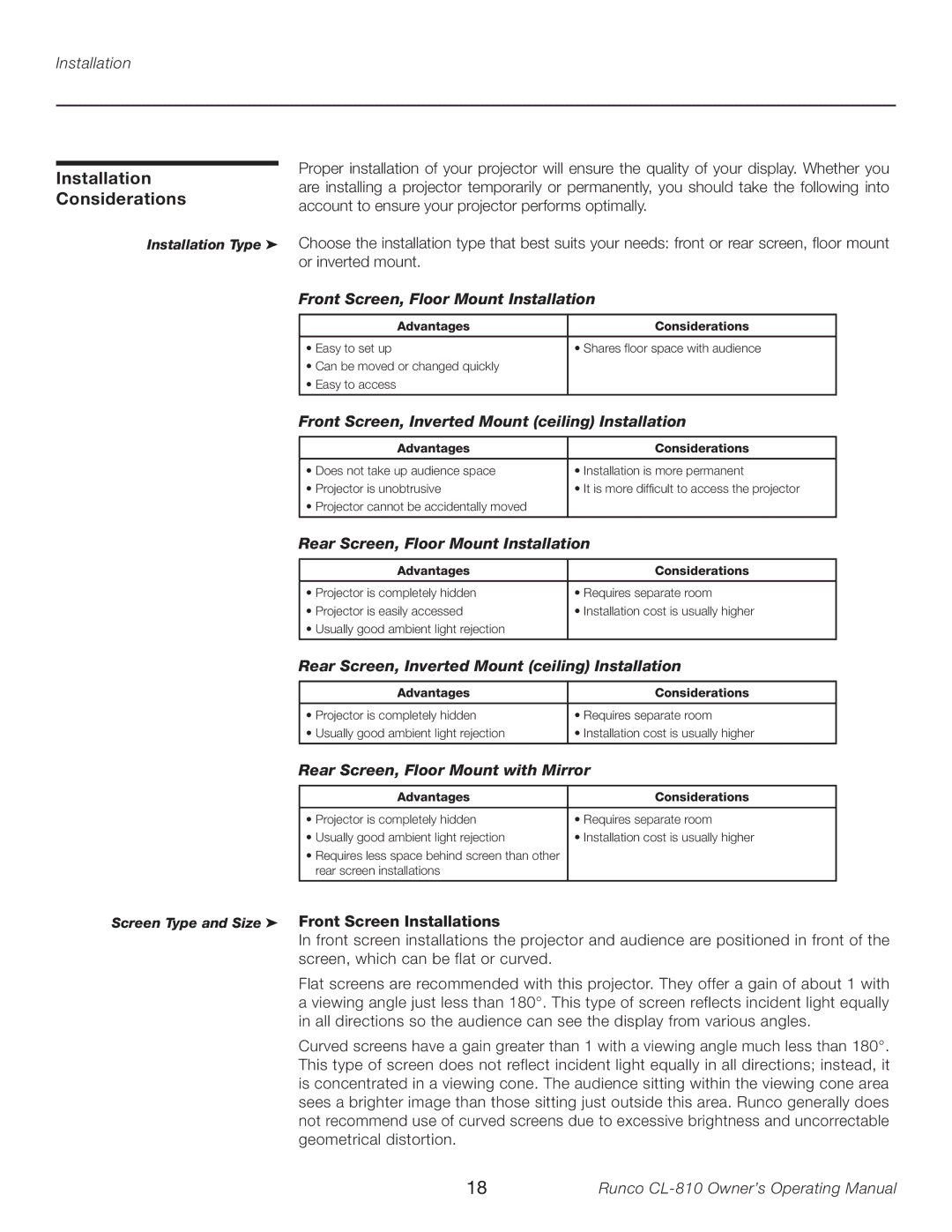
Installation
Installation
Considerations
Installation Type ➤
Proper installation of your projector will ensure the quality of your display. Whether you are installing a projector temporarily or permanently, you should take the following into account to ensure your projector performs optimally.
Choose the installation type that best suits your needs: front or rear screen, floor mount or inverted mount.
Front Screen, Floor Mount Installation
Advantages | Considerations |
|
|
• Easy to set up | • Shares floor space with audience |
• Can be moved or changed quickly |
|
• Easy to access |
|
|
|
Front Screen, Inverted Mount (ceiling) Installation
Advantages | Considerations |
|
|
• Does not take up audience space | • Installation is more permanent |
• Projector is unobtrusive | • It is more difficult to access the projector |
• Projector cannot be accidentally moved |
|
|
|
Rear Screen, Floor Mount Installation
Advantages | Considerations |
|
|
• Projector is completely hidden | • Requires separate room |
• Projector is easily accessed | • Installation cost is usually higher |
• Usually good ambient light rejection |
|
|
|
Rear Screen, Inverted Mount (ceiling) Installation
Advantages | Considerations |
|
|
• Projector is completely hidden | • Requires separate room |
• Usually good ambient light rejection | • Installation cost is usually higher |
|
|
Rear Screen, Floor Mount with Mirror
Advantages | Considerations |
|
|
• Projector is completely hidden | • Requires separate room |
• Usually good ambient light rejection | • Installation cost is usually higher |
• Requires less space behind screen than other |
|
rear screen installations |
|
|
|
Screen Type and Size ➤ Front Screen Installations
In front screen installations the projector and audience are positioned in front of the screen, which can be flat or curved.
Flat screens are recommended with this projector. They offer a gain of about 1 with a viewing angle just less than 180°. This type of screen reflects incident light equally in all directions so the audience can see the display from various angles.
Curved screens have a gain greater than 1 with a viewing angle much less than 180°. This type of screen does not reflect incident light equally in all directions; instead, it is concentrated in a viewing cone. The audience sitting within the viewing cone area sees a brighter image than those sitting just outside this area. Runco generally does not recommend use of curved screens due to excessive brightness and uncorrectable geometrical distortion.
18 | Runco |
